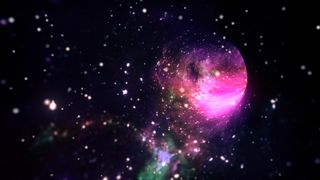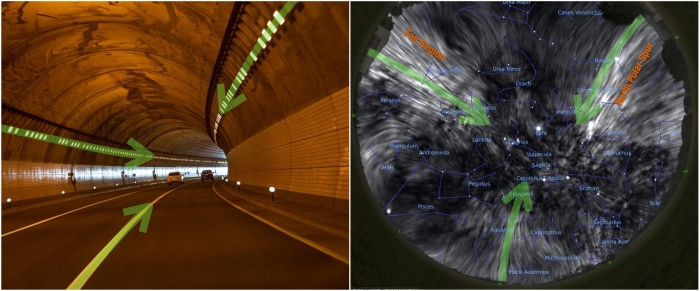Quantum physicists are familiar with wonky, seemingly nonsensical phenomena: atoms and molecules sometimes act as particles, sometimes as waves; particles can be connected to one another by a “spooky action at a distance,” even over great distances; and quantum objects can detach themselves from their properties like the Cheshire Cat from Alice’s Adventures in Wonderland detaches itself from its grin.
Now researchers led by Daniela Angulo of the University of Toronto have revealed another oddball quantum outcome: photons, wave-particles of light, can spend a negative amount of time zipping through a cloud of chilled atoms. In other words, photons can seem to exit a material before entering it.
“It took a positive amount of time, but our experiment observing that photons can make atoms seem to spend a *negative* amount of time in the excited state is up!” wrote Aephraim Steinberg, a physicist at the University of Toronto, in a post on X (formerly Twitter) about the new study, which was uploaded to the preprint server arXiv.org on September 5 and has not yet been peer-reviewed. READ MORE...
“It took a positive amount of time, but our experiment observing that photons can make atoms seem to spend a *negative* amount of time in the excited state is up!” wrote Aephraim Steinberg, a physicist at the University of Toronto, in a post on X (formerly Twitter) about the new study, which was uploaded to the preprint server arXiv.org on September 5 and has not yet been peer-reviewed. READ MORE...




 Comparison with a real tunnel showing orientation. (Left: Pixabay/wal_172619/J. West; Right: Dominion Radio Astrophysical Observatory/Villa Elisa telescope/ESA/Planck Collaboration/Stellarium/J. West)
Comparison with a real tunnel showing orientation. (Left: Pixabay/wal_172619/J. West; Right: Dominion Radio Astrophysical Observatory/Villa Elisa telescope/ESA/Planck Collaboration/Stellarium/J. West)